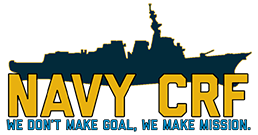With the help of artificial intelligence, machine learning, and cadavers donated to science, Navy researchers are building ultra-realistic digital human models that will help them learn how various military platforms and combat equipment affect a sailor’s body over time.
Officials imagine a future in which every sailor will get their own “digital twin” to demonstrate how different tasks or career fields would affect their bodies over the years.
This is the world of the Incapacitation Prediction for Readiness in Expeditionary Domains, or I-PREDICT, an Office of Naval Research effort years in the making that may soon be helping those in Navy aviation and the fast boat communities, among others, to better protect their bodies of sailors from long-term damage.
The Navy’s fiscal 2025 budget request calls for $1.3 million to develop I-PREDICT, wrapping up a total three-year spend of $7.8 million.
It’s a big year for the program, which may have the chance to prove its value in three real-world use cases.
Those cases include tests on the load and distribution of bulky aviator helmets,; safe and effective designs for gunners’ belts and an improved seat design for Navy air crews, according to Tim Bentley, I-PREDICT’s inventor at ONR.
“It is the best crash test dummy in the world,” Bentley said of these digital human models. “We can look at very small [movement] subcomponents: bending, flexing, straining. We can use physics to understand what happens to the human – take it way back down to the very fundamentals of how people grow together, how their tissues respond and how to put them together again.”
After more than a decade of development, I-PREDICT in its latest form is slated to be ready for delivery to the Navy within a year and a half, Bentley said.
Digital models are needed because conventional crash test dummies, like the ones used by car companies to test vehicle safety, fail to capture every aspect of how impacts affect the human body, Bentley said.
Those dummies have stiff spines and lack internal organs, and they are famously bad at imitating realistic human neck movements, he said.
By contrast, a digital model based on actual human flesh, bone and muscle can reveal what a crash test dummy cannot.
Aided by artificial intelligence, researchers can simulate not just a single crash, or movement, or vibration, but thousands of them, to understand how the body responds to inputs or environments over a career or a lifetime, he said.
“We predict what would happen if you tip your head like this,” Bentley said, indicating an angled movement while wearing a heavy aviator’s helmet. “One time isn’t so bad; five times isn’t so bad. But 60,000 times starts to become bad … so we can project into the future.”
The unique and hard-to-replicate conditions pilots are subjected to – including wearing heavy helmets while pulling 9 Gs in flight maneuvers – make aviation an ideal test bed for I-PREDICT.
In fact, Bentley said, a limited beta version of the tool in trial about a decade ago had shown that one helmet design being considered by the Navy would have actually caused aviators’ deaths due to its weight and load distribution.
“Our main goal right now is working with [Naval Air Systems Command] to better understand how people get injured, can we prevent them from becoming injured, [so] they can fly longer,” Bentley said. “We’ve put a lot of money into training people and we want them to have full, successful careers. But if they get neck and back injuries that make them quit flying, we lose the advantage of their experience.”
ONR is also working with Navy fast boat crews to negotiate future uses of I-PREDICT, Bentley said, with a focus on the repetitive pounding of joints and tendons in choppy water. He sees future value for the surface Navy in requirements like shock trials, where new ships are exposed to explosive blasts to test their resilience. Being able to “shock trial” a highly realistic simulated crew in the design phase could yield accurate data about the survivability of one platform’s design over another.
“We’ve always had a problem testing how tough the people are on the ship,” Bentley said.
Getting the data to build realistic human models means getting up close and personal with bodies of many varieties. The digital twins primarily rely on cadavers, which can also be used to make sure the simulations move like real bodies. A 2021 “fuselage drop test,” involving three “post-mortem human passengers,” for example, helped support I-PREDICT’s human modeling. Researchers also have used human volunteers for modeling where there’s not an injury risk, and animal test subjects, mainly pigs, for live tissue modeling, Bentley said.
A fiscal 2025 priority, expanding the range of digital models to represent the full scope of human sizes from the 5th to 95th percentiles, will take advantage of existing Navy human dimensions data used for uniform sizing and other functions. When the user interface that’s also being developed over the next year is complete, Bentley envisions being able to select the height and dimensions of a human model for testing to get a custom look at impacts on a given sailor or group of sailors.
But the ambitious goals don’t stop there. Bentley hopes to one day create a digital twin of every individual entering the Navy, using technology such as CAT scans and magnetic resonance imaging (MRI) to get a realistic capture of a person, from their hair to their internal organs.
Not only would that help to assess an individual’s fitness for military service in various physically demanding careers at the onset, it could also follow them around as a sort of 3D medical record, helping them with things like ordering uniforms that fit perfectly, he said.
“This is definitely a long-term plan,” Bentley said.





